Key takeaways
- Paranormal infotainment combines storytelling, history, and the thrill of investigation, inviting audiences to explore the unknown with respect and curiosity.
- The Biltmore Estate serves as a testament to American history, reflecting its evolution through lavish gatherings and wartime narratives, which add layers of mystery.
- Researching paranormal stories involves primary sources and firsthand accounts, offering deeper insights into the experiences and emotions tied to the estate’s history.
- Personal encounters at the Biltmore illustrate the tangible connection between past and present, enhancing the intrigue surrounding its ghostly tales.
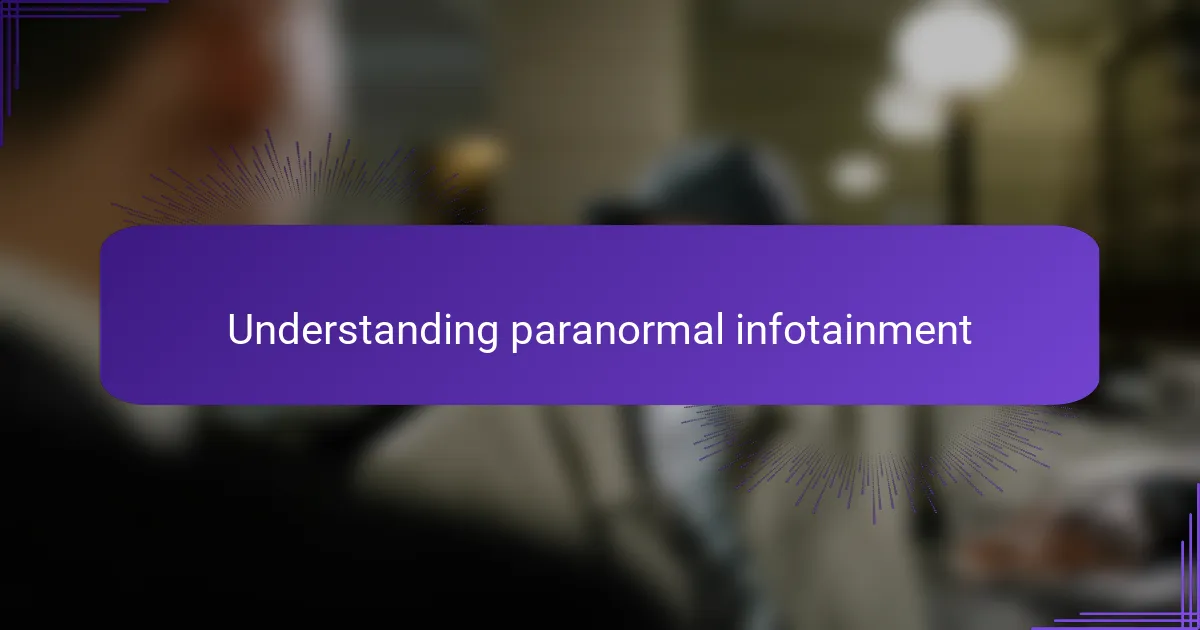
Understanding Paranormal Infotainment
Paranormal infotainment mixes the thrill of ghost stories with the curiosity of real investigations, creating a unique experience that keeps me hooked every time. It’s not just about telling spooky tales; it’s about exploring the unknown with a sense of wonder and respect. Have you ever felt that eerie chill when a story blurs the line between fact and mystery? That’s the magic here.
What fascinates me is how paranormal infotainment invites us to question what we think we know about the world. It’s a blend of storytelling, history, and sometimes even science, where I feel like both a skeptic and a believer at once. This dual perspective makes the stories come alive in a way pure fiction never could.
I’ve noticed that the best paranormal infotainment respects its audience’s intelligence while sparking imagination. It doesn’t just feed fear—it invites discovery and connection with something larger than ourselves. Isn’t that why so many of us are drawn to these tales, seeking answers beyond the ordinary?
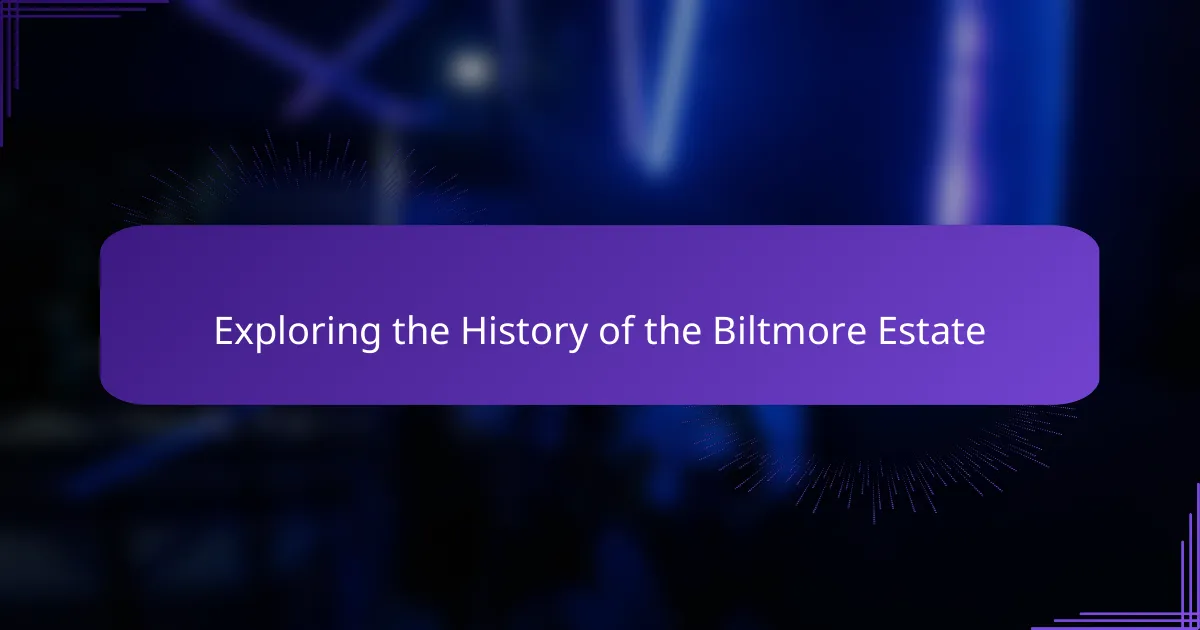
Exploring the History of the Biltmore Estate
Digging into the history of the Biltmore Estate, I quickly realized it’s more than just a grand mansion—it’s a living chapter of American history. Built in the late 1800s by George Washington Vanderbilt II, it was designed to be a self-sufficient estate, blending opulence with innovation. I found myself drawn into the stories behind its walls, wondering how the echoes of the past might still linger today.
As I traced the lineage of the Vanderbilts, I was struck by the sweeping changes the estate has witnessed—from lavish parties to wartime efforts and shifts in ownership. Each era seemed to add its own layer of mystery, and I couldn’t help but ask: What secrets do these halls hold that have yet to be told? That question fueled my curiosity every step of the way.
Exploring the estate’s archives revealed details I hadn’t expected, like the influence of European architecture and the estate’s role in regional development. Learning these facts made me appreciate how the Biltmore is not just a backdrop for ghost stories but a testament to American ambition and resilience. How thrilling is it to think that the real history might be the ghost story itself?
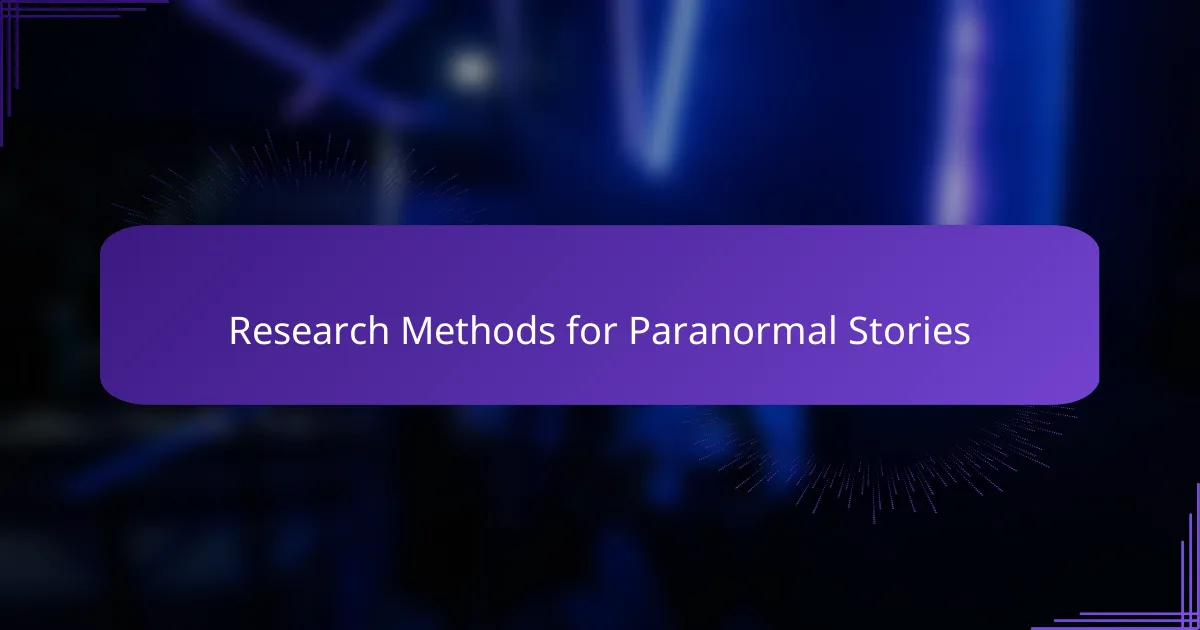
Research Methods for Paranormal Stories
When I began researching paranormal stories, I quickly realized that method matters just as much as mystery. I relied heavily on primary sources—old letters, diaries, and estate records—that gave me a glimpse into the firsthand experiences of those who lived at the Biltmore. Have you ever noticed how an original document carries a weight that retellings simply can’t match? That feeling of touching the past made the stories more vivid for me.
Another crucial method was interviewing local experts and longtime staff who have their own tales and insights rooted in daily life at the estate. Listening to their voices—sometimes hesitant, sometimes animated—gave me a fresh perspective and raised questions I hadn’t considered. How do you separate legend from lived experience when they intertwine so closely?
Lastly, I embraced on-site investigation, walking the halls and grounds myself during twilight hours. There’s something about being physically present that even the best books can’t replicate. I found myself asking, “What atmosphere do these places hold after dark?” This hands-on approach allowed me to connect the stories with real spaces, turning abstract ghost tales into tangible mysteries waiting to be understood.
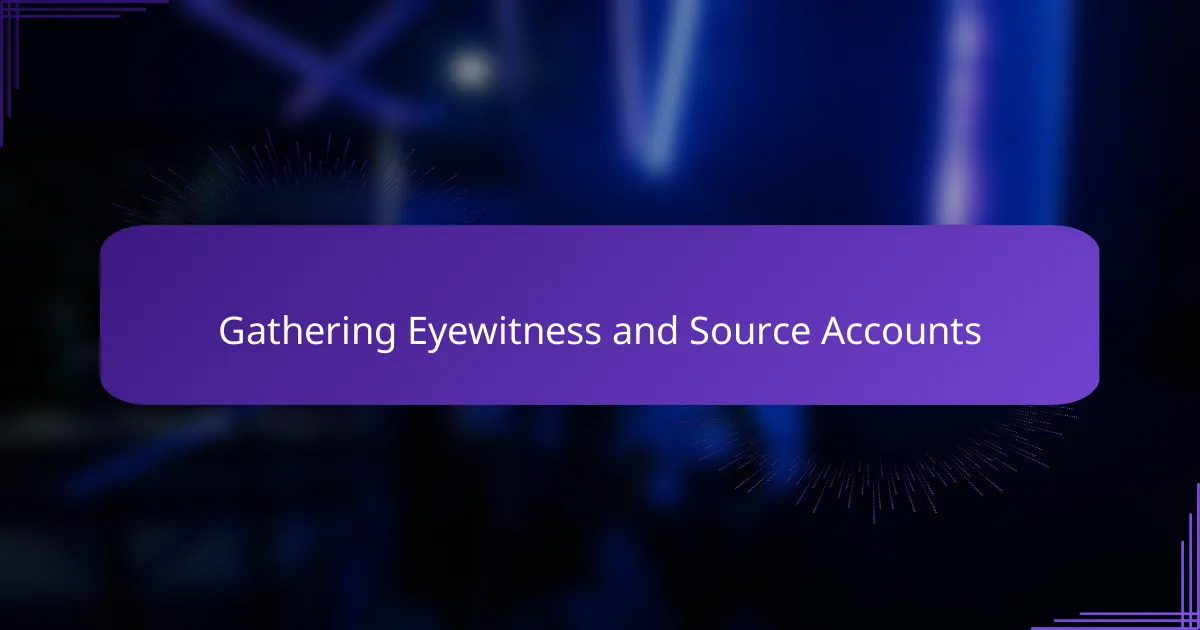
Gathering Eyewitness and Source Accounts
Tracking down eyewitness accounts felt like piecing together a puzzle from whispers and glimpses. I reached out to estate staff who had worked there for years—I could sense their genuine unease as they recounted strange noises or fleeting shadows. Isn’t it fascinating how hesitation in their voices often speaks louder than the stories themselves?
Digging through archived letters and journals, I found mentions of unexplained events that, at first, seemed like mere gossip. Yet, the consistency of these accounts across different sources made me wonder: Could these stories have a kernel of truth? Handling these documents, I felt a tangible connection to the past that no retelling could replace.
One moment that stuck with me was sitting with a longtime groundskeeper under the moonlight as he described his eerie encounters near the old hedge maze. His candor and slight nervous laugh made me realize that sometimes, the living witnesses carry the heaviest weight of these ghostly tales. How often do we overlook their experiences in favor of sensationalized myths?
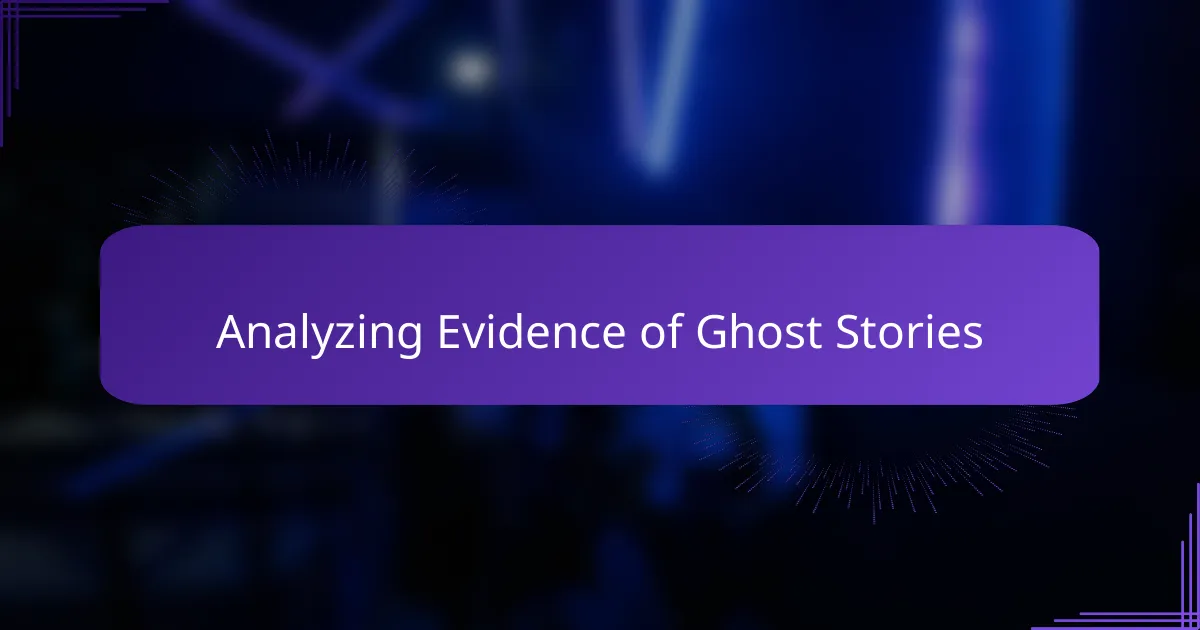
Analyzing Evidence of Ghost Stories
As I sifted through the collected stories and firsthand accounts, I kept asking myself: What truly counts as evidence in ghost stories? It’s tempting to dismiss these tales as mere superstition, but when multiple sources describe similar sensations—cold spots, fleeting figures—I began to wonder if there’s something more than coincidence at play. Have you ever felt that subtle shift in the atmosphere that words alone can’t capture?
One moment that really struck me was comparing the estate’s historical records with modern eyewitness descriptions. The overlap between reported hauntings and specific locations tied to past events made me pause. Could these stories be echoing real experiences, preserved through time yet filtered by memory and imagination? It made me consider how history and haunting stories intertwine, challenging my skepticism in unexpected ways.
At the same time, I remained cautious, knowing how easily our minds fill in gaps with assumptions. I reminded myself that emotional testimonies need careful scrutiny—how much comes from genuine encounters versus the powerful allure of the estate’s legends? Reflecting on this, I realized that analyzing ghost stories is as much about understanding human perception as it is about chasing the supernatural. Does that blur between fact and feeling make the story even more compelling to you?
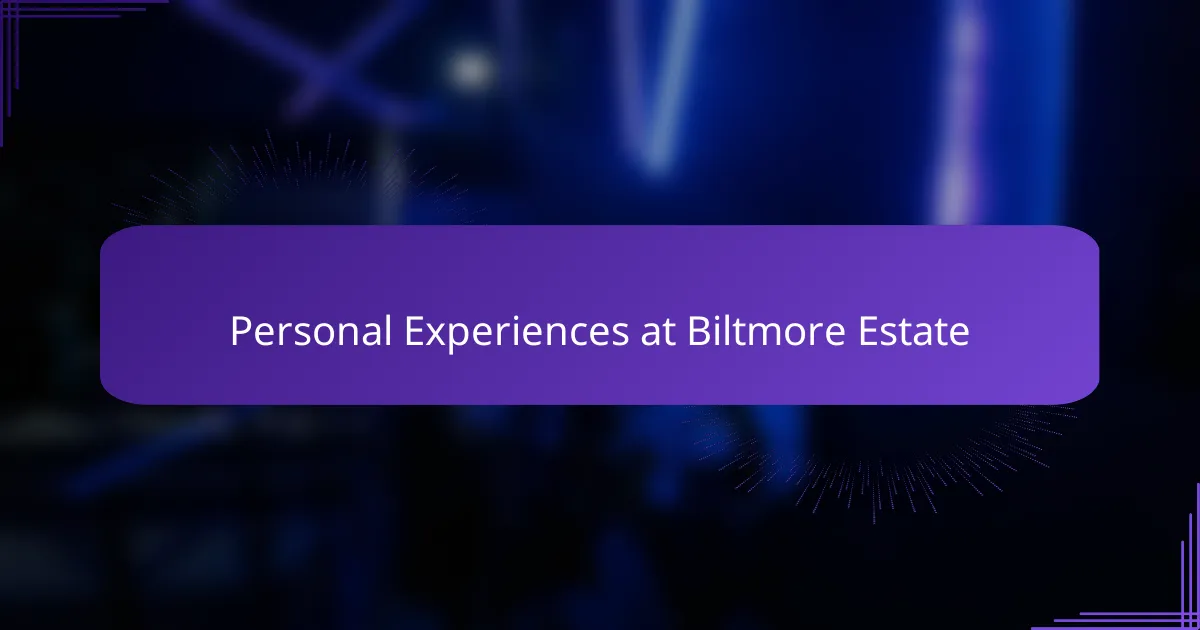
Personal Experiences at Biltmore Estate
Walking through the dimly lit corridors of the Biltmore Estate one evening, I felt an undeniable shift in the air—like a silent presence just beyond perception. Have you ever experienced that strange mix of curiosity and unease, where the past feels almost alive? For me, those moments turned abstract stories into something palpably real.
During a quiet pause near the grand staircase, a sudden chill whispered across my skin, and I couldn’t help but wonder if the estate’s many tales were more than just legend. It’s fascinating how a simple sensation can spark a flood of questions: Are these feelings echoes of lives long gone, or merely tricks of the mind shaped by the setting’s history?
One unforgettable encounter came when a guide shared her own unexplained experiences, her voice lowering as she spoke of footsteps and fleeting shadows she’s observed over years of working there. Hearing her personal stories up close made me realize how much these ghost stories live in the everyday, shaping the very atmosphere of the estate—not just in whispered legends, but in real moments shared by those who know it best.